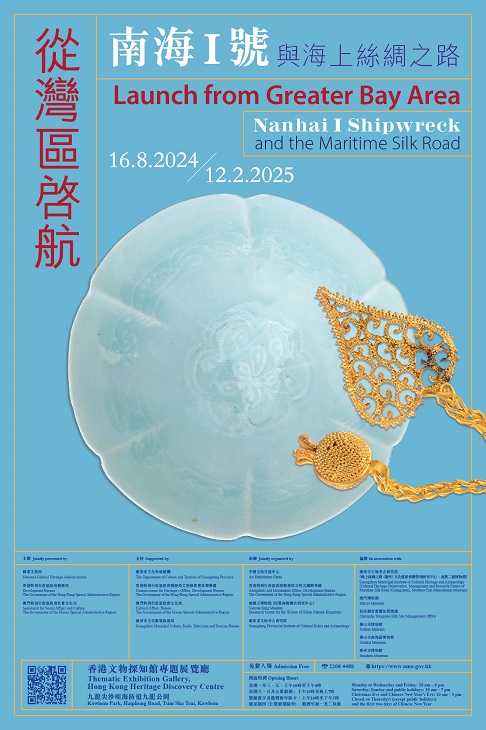“Launch from Greater Bay Area: Nanhai I Shipwreck and the Maritime Silk Road” Exhibition
The Maritime Silk Road was the ancient sea route for trade and cultural exchange between China and other countries and regions. Starting from Qin and Han dynasties, China gradually formed a multi-tiered trading port system centred around the port of Guangzhou, with Hong Kong, Macau, and other places as transit hubs. In other words, the Guangdong-Hong Kong-Macao Greater Bay Area played a significant role throughout the historical development of the Maritime Silk Road.
“Nanhai I” was a merchant ship of the Southern Song dynasty. Its shipwreck was salvaged in 2007 and is the most complete ancient ocean-going merchant ship discovered through archaeological excavation to date. A large collection of artefacts was discovered from “Nanhai I”, including mainly porcelain, bronzeware, ironware, gold, silverware, lacquerware and woodenware. The quantities, shapes, craftsmanship and forms of the artefacts are rare among the archaeological finds of the Southern Song dynasty. Archaeologists believe that "Nanhai I" might have sunk along the maritime route from Guangdong to South China Sea in the tenth year of the Chunxi reign (1183) of the Southern Song dynasty or shortly afterwards.
Among the 255 items of exhibits are artefacts discovered from “Nanhai I”, including brown glazed jar with four lugs and stamped Chinese characters “Chun Xi Shi Nian” (i.e. the tenth year of the Chunxi reign) from Nanhai kiln; qingbai glazed foliated bowl with stamped plum blossom pattern from Jingdezhen kiln; green glazed ogee-shaped foliated dish with incised lotus pattern from Longquan kiln; necklace with gold chain and rhinoceros horn-shaped cone ornaments; and gem-set hollow gold bracelet. Also on display are relevant exhibits unearthed from Guangdong, Hong Kong and Macao, including bottom fragment of qingbai glazed bowl with inked Chinese characters “Gong Shi” (i.e. envoy) from Hutian kiln of Song dynasty from the site of the Nanyue Kingdom Palace in Guangzhou; yellowish-green glazed jar with six lugs and dragon pattern of Song dynasty from the site of the former Sacred Hill in Hong Kong; and blue-and-white kendi with elephant head shaped spout from Jingdezhen kiln of Ming dynasty from the site of the St. Paul's College in Macao.
| Date: | 16/8/2024 – 12/2/2025 |
|---|---|
| Venue: | Thematic Exhibition Gallery, Hong Kong Heritage Discovery Centre |
| Opening Hours: | Monday to Wednesday and Friday: 10am – 6pm Saturday, Sunday and public holidays: 10am – 7pm Christmas Eve and Chinese New Year’s Eve: 10am – 5pm Closed on Thursdays (except public holidays) and the first two days of Chinese New Year |
|
Admission Free |
|














